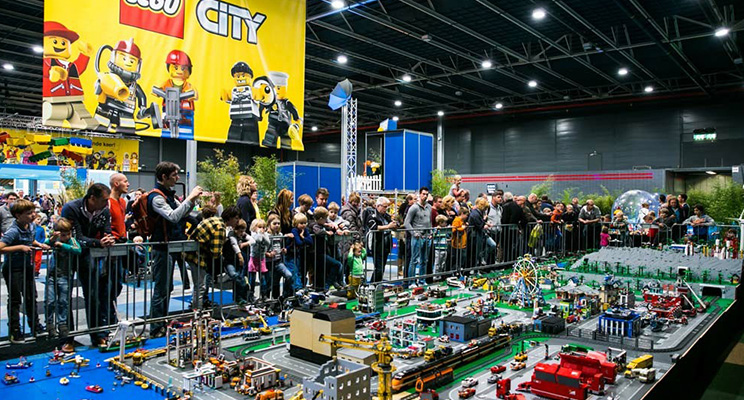
Every part of the world has a rich and varied tradition of toy making as a process and the toys they offer. Toys have always been part of civilizations across the globe where artifacts from Egypt were found to be made of wood and marble, kites from China made of bamboo and silk, Greek sites would unearth wax and wooden toys, and India was found to have a mix of them all. However, toys in the modern world are entirely revolutionized due to the advent of technology and the power of branding.
Toys are no more marketed just towards children but adults as well. Following are some examples of brands who understood the opportunity that toys brought as an exciting indulgence and a refreshing offering.
STAYING WITH THE TREND
Here are some toy brands that adapted their products based on trending themes to stay relevant and expand their target market simultaneously.
Lego’s: Building blocks were the oldest form of toys that enhanced the cognitive intelligence of children. But who would have thought that one day these building blocks would become a sensation for even adults and there would ever come a time when Lego’s Harry Potter-themed set would be priced at a whopping $480? Several other themes target adults, like Star Wars, Avengers, Batman, Ghost Busters, and more.
Hot Wheels: They famously engage in brand collaborations across industries like with the latest video game brands (Forza Horizon and UBSoft), famous movie franchises (Fast & Furious and Cars), cartoons like (Tom & Jerry and Scooby Doo), etc. They aim to design new products with themes of anything with a car featured in it, be it a movie, cartoon show, television series, or even a luxury automobile brand launching a new model of their vehicle. They capture markets of all demographics across genders and age groups.
Monopoly: Back in the day, board games like Monopoly were the most fun way of learning the business and the steppingstones towards understanding finance. Soon, with the progression of the dynamics in the market, Monopoly started featuring themes of movies like Jurassic Park, Star Trek, Fast and Furious, and other Disney movies. Monopoly also released a board with pieces of T.V. shows like Game of Thrones, Bob’s Burgers, Stranger Things, and Friends, along with other brands like M&Ms too. They also introduced technologically savvy versions of the game by introducing credit cards and card-swiping machines in the set to trade properties.
Marvel Merchandise: Even though the Marvel & D.C. comic universes have massive fan bases, Marvel has the upper hand when it comes to Marvel-themed merch and, more so, toys. Marvel sells many more action figures, bobbleheads, puzzles, superhero accessories, costumes, etc. than D.C. ever tries to. Innumerable brands and designers are obsessed with making their products Marvel-themed because the sensation around the franchise is such.
UNIQUE PARTNERSHIPS
Kellogg’s: The first cereal to entice children to eat cornflakes was Kellogg’s. It was an ingenious way to make eating healthy and fun. So, toys gradually became a strategic and promotional element along with serving their purpose of fun for all those who ate their cereal. To win limited-edition surprise toys that might land their box of cereal, people started hoarding the boxes hoping to find the collectibles because they would mature and become worth a lot of money.
McDonald’s: McDonald’s came up with the novel idea of putting together a happy meal marketed towards youngsters in 1979, about 20 years after the food chain’s inception. Originally the happy meal had a burger, a portion of fries, and an ice-cream sundae as a treat, but soon it was replaced with a doll or an action figure. This had never been done before, and since then, McDonald’s has collaborated with movies, T.V. shows, toy chains, and more to bring treats to anyone who orders a happy meal with numerous themes like Madagascar, Minions, My Little Pony, Transformers, Snoopy and more. What’s more interesting is that the burger giant has invested in launching happy meals marketed towards adults since October 2022. McDonald’s never failed to trailblaze with innovations and bold marketing tactics and thrived on the benefits of becoming the first mover.
SOCIAL IMPACT
Keeping up with the times is essential for any business to sustain itself for a long time. Following toy brands modified their age-old offerings that needed more progressive to be in sync with the times.
Burger King: Burger King wanted to compete with McDonald’s offerings and invested in launching their versions of happy meals in some countries. They partnered with several franchises that would become the theme of their free toys, like Pokémon, Angry Birds, Justice League by D.C. Comics, Trolls, and more. Recently, Burger King started this sustainability campaign in the U.K., where they began encouraging customers to bring in old promotional plastic toys in return for rewards, which they intend to melt into things of utility like play areas and surface tools, which can be recycled many times over.
Barbie: The traditional Barbie that we remember is an “apparently” flawless figurine of a woman marketed towards little girls. However, modern parents were uncomfortable engraining their children with toxic beauty standards and objected to their designs. Barbie understood that if they had to stay in the game, they needed to discard the outdated and offensive designs and give Barbie a fresh look. Today Barbie has become a toy brand that includes different races, nationalities, and communities. They made this shift in positioning when they introduced dolls with varying types of body, hair and body colours, regional clothing, gender-neutral identities, and even different physical disabilities to live up to their tagline “You can be anything.”
AN EXPERIENCE FOR ALL
Disneyland: This wonderland created by Disney is heaven for children and a haven for toys. Everything that fascinates you in a Disney movie has a product in Disneyland; if it is a feeling, it is a ride. If it is a thing, it is a toy. They have Mickey Mouse-themed everything: foods, costumes, photobooths, mascots, rides, and toys. And not just Mickey Mouse, you name any Disney character, and they have merch you can take back home. Funnily enough, as excited as children get for their costly, hence yearly, a trip to Disneyland, innumerable couples plan their dates and even proposals in Disneyland. Even for adults, Disneyland is a dreamland.
Hamleys: Hamleys is a toy store that targets both children and adults. Hamleys is the oldest toy store in the world, and practically all the toy brands mentioned above work with Hamleys to sell their products as it captures 20% market share of every toy they sell in their store. The store has play areas for customers to try out their products and have sales executives playing with them, building up fascination around the products in customers’ minds to try them out for themselves.
TRYING TO CATCH UP
Bratz Dolls: Bratz Dolls followed Barbie’s lead when they first came out in 2001; they were trendier because of their culturally diverse dolls right from the onset. However, they fell off the radar in the 2010s when their redesigns were disappointing. In 2016 they tried penetrating the market again with redesigns including celebrity-inspired dolls, dolls with vitiligo, dolls with outfits from famous fashion houses, etc. Still, they needed help to regain their popularity as they failed to make the right move at the right time. They are still struggling to regain their lost magic, and it looks like there is a long way to go for Bratz Dolls.
Toys R U.S.: This toy empire was devoted to customers and was so admired across the business community that it reigned for four decades until their shopping experience became stale. However, as other players started making their way into the toy-making business, the toy-focused brand did nothing to enhance the customer experience, ignoring the threat coming their way. They also overlooked the danger even when companies from other industries, like, Best Buy, strategically entered the toy production market for older children. They would still be running because they lack the urgency to adapt to the changing times.
We can see how different brands identified the opportunity they had of expanding their market size from children of varying age groups to adults of various ages through toys. As a brand, what you should take away from this is that you will always find trends, news, seasons, festivals, and practically anything under the sun to capitalize on if you use it well. For your product, there is always a group you target and then the group that doesn’t need the product. By working with your brand’s strategic team, you can find ways to market your product to create a need for the group that doesn’t even need your product. That is the power of strategic thinking.
AUTHOR:
Mallika Dhupar is an Account Manager with WeYou Partners and specializes in brand strategy and positioning.








